ParaView 5.2.0 Release Notes
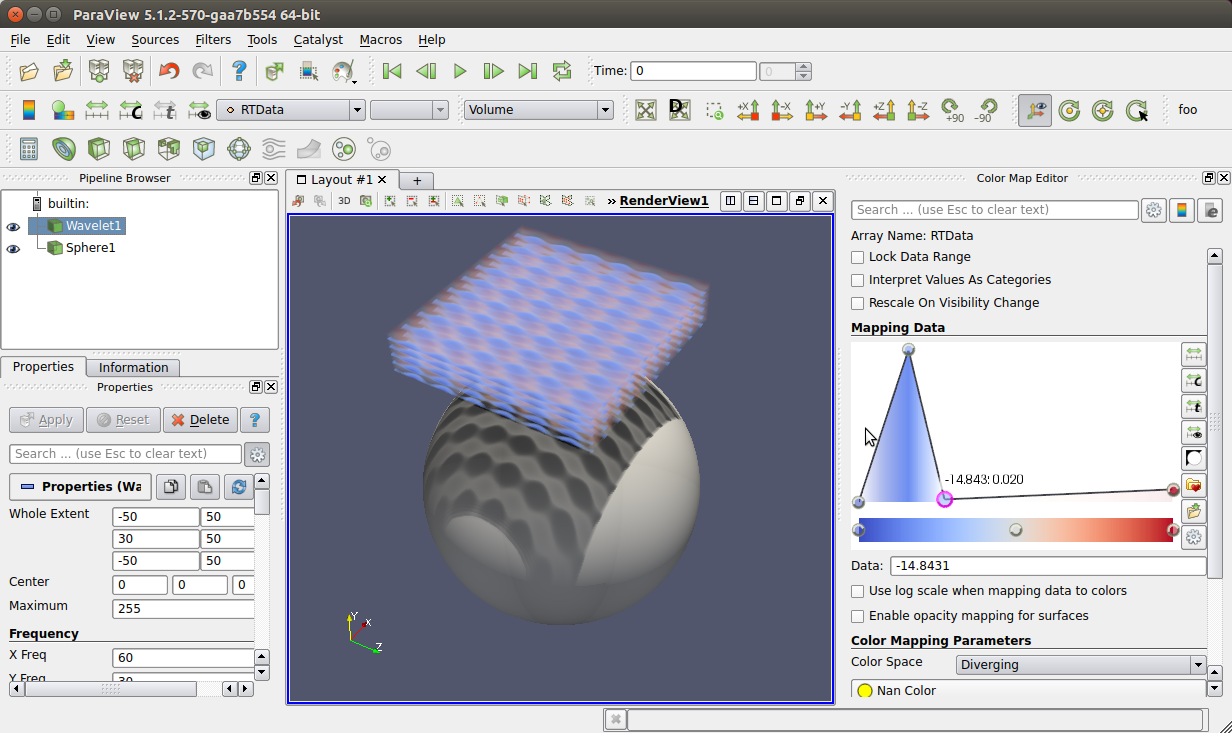
ParaView 5.2.0 is now available for download. The full list of issues addressed by this release is available here. Major highlights in this release include:
New Rendering Features
Anti-aliasing is now available in ParaView. It can be enabled by checking “Use FXAA” in the Render View section of ParaView’s general settings. More info
Hidden line removal is available for rendering only the nearest portions of a wireframe model. More info
Molecule rendering saw numerous improvements, including color legend support, custom atomic radii, and the ability to color atoms by arbitrary scalar arrays. More info
ParaView’s Intel OSPRay-based ray traced rendering backend, which was introduced in 5.1, continues to mature. In 5.2 we fixed a number of reported bugs, updated from OSPRay version 0.10.0 to 1.1, and gained full access to OSPRay’s volume rendering. The performance falls between VTK’s own fixed point CPU and GPU enabled volume renderers. Of particular interest is that this is VTK’s first volume rendering option that enables volumes to cast shadows, albeit only in non-distributed memory cases.
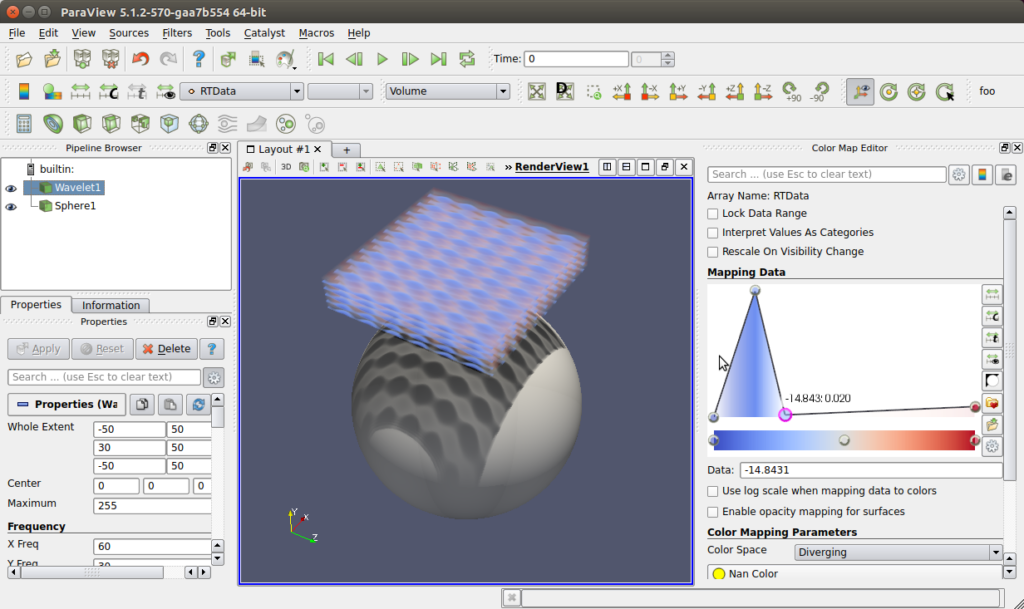
Figure 1: OSPray volume rendering enables shadows.
Improvements to VTK’s GPU volume mapper prevent seam artifacts due to discontinuous sampling when doing parallel volume rendering. More info
Volume rendering by vector components and vector magnitude is now available for structured data when using the GPU-based volume rendering mode. There is no longer a need to use an intermediate Calculator filter to compute these quantities. This mode makes use of the GPU-based volume rendering’s independent component support and computes a magnitude array automatically behind the scenes.

Figure 2: (From left to right) The two images on the left show a surface representation of the Magnitude and Y-component of a vector field (coordsX * iHat + 10 * coordsY * jHat + coordsZ * kHat). The left portion shows the equivalent volume representations.
Mixed multiblock and composite dataset rendering with the OpenGL2 backend is significantly faster than in prior releases.
When rendering semi-translucent geometry in parallel, added a new option called “Use Data Partitions”. For unstructured grids and polydata this option will skip the redistribution of points and cells of a data set that was previously needed in order to properly perform depth-sorting for correct rendering. This can dramatically increase the parallel rendering performance. This option requires that all visible data sets in the view have the same partitioning in order to get the rendered view correct. The default setting for this is to have “Use Data Partitions” set to off since in general the partitions will not coincide and the rendered view will be incorrect.
Mesa 13.0 is now used in Kitware’s Linux distributions of ParaView to benefit from significant speedups resulting from optimizations to Intel’s OpenSWR engine.
Additional Enhancements
Reloading data files: With this release, we now support refreshing or forcing a reader to reload all data files. This enables updating the visualization based on any changes to the files, e.g., the addition of new time steps. Use the Edit > Reload Files menu option to force the active reader to reload all data files.
The Ruler source has been revamped. In addition to indicating the location of the end points and then showing the distance on the Properties Panel, the new changes allow you to show the Ruler in any Render View. Using the Display properties on the Properties Panel, you can control its appearance including font, color, and graduation resolution.
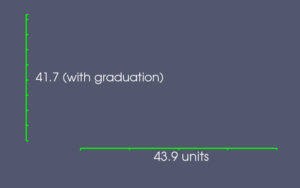
Figure 3: New appearance properties have been added to the Ruler source.
Extract Time Steps filter: This filter can extract the specified time steps from its input dataset. This is useful for cases where one wishes to process only a subset of the input time steps.
Assemble time steps into a multiblock dataset: By default, a file series is considered to represent a collection of time steps. The new Group Time Steps filter lets you assemble the data set at each time step into a single multiblock dataset.
Line Widget improvements: Improvements have been made to the line widget in ParaView to make it more user friendly. More info
The ParaView application name on Mac OS X now has version information to support side-by-side installation of more than one ParaView version.
Quoted array names in Calculator: Array names may contain units inside parentheses, e.g., “Velocity (m/s)”. When they do, they are unavailable in the Calculator because the parentheses and forward slash are interpreted as part of an expression rather than as a variable. To address this, ParaView 5.2 adds support for using quotation marks around such names so that they are interpreted as variables.
Resample With Dataset Filter: This filter is intended to replace the probe filter. It can resample one multiblock dataset of any type,on to another multiblock dataset of any type. This filter uses DIY2 framework for efficient parallel implementation. More info
 Figure 4: Example of Resample With Dataset. The left-hand side contains a multiblock tetrahedra mesh (Input). The middle portion of the image shows a multiblock unstructured grid (Source). The outline of Input is also shown in this view. The right-hand side displays the result of applying the filter.
Figure 4: Example of Resample With Dataset. The left-hand side contains a multiblock tetrahedra mesh (Input). The middle portion of the image shows a multiblock unstructured grid (Source). The outline of Input is also shown in this view. The right-hand side displays the result of applying the filter.
ParaViewWeb
ParaView 5.2 includes the latest ParaViewWeb – Visualizer and LightViz applications which takes advantage of the new ParaViewWeb library. More info
Cinema
ParaView’s export for deferred rendering browsable databases, a.k.a. Cinema, has been updated. This newest version, code named “Chaplin”, has a significantly expanded camera model and more accurate direct-to-float value-rendered images. The new camera model encapsulates complete camera reference frames, which allows Cinema to optimize away redundant snapshots and to be more expressive. For example we now support both inward and outward facing cameras with roll and object tracking and the infrastructure can support others. The direct-to-float rendering relies on OpenGL floating-point textures to make rasters of unmodified data array values. This overcomes a number of precision and accuracy issues in the older approach.
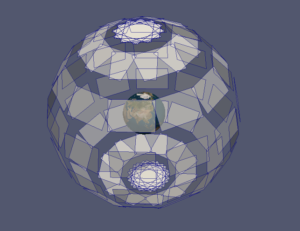 |
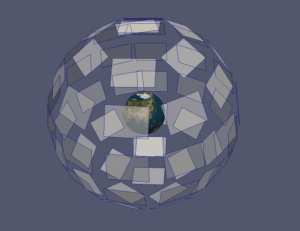 |
Figure 5: Camera near planes from a Cinema export of an earth scene with older Phi/Theta camera on left and a corresponding Pose-based camera on right.